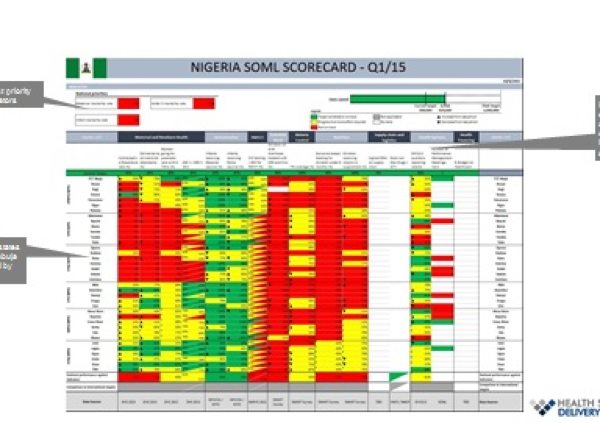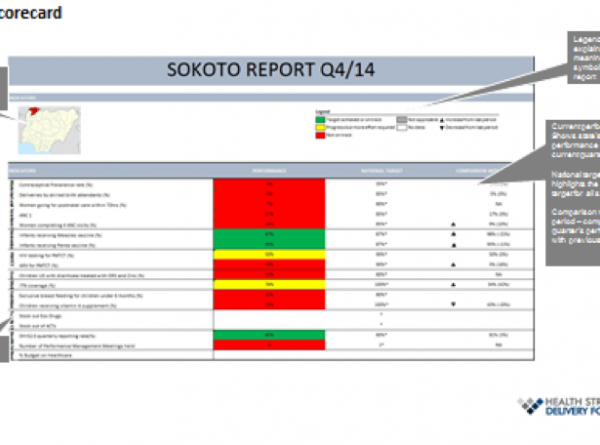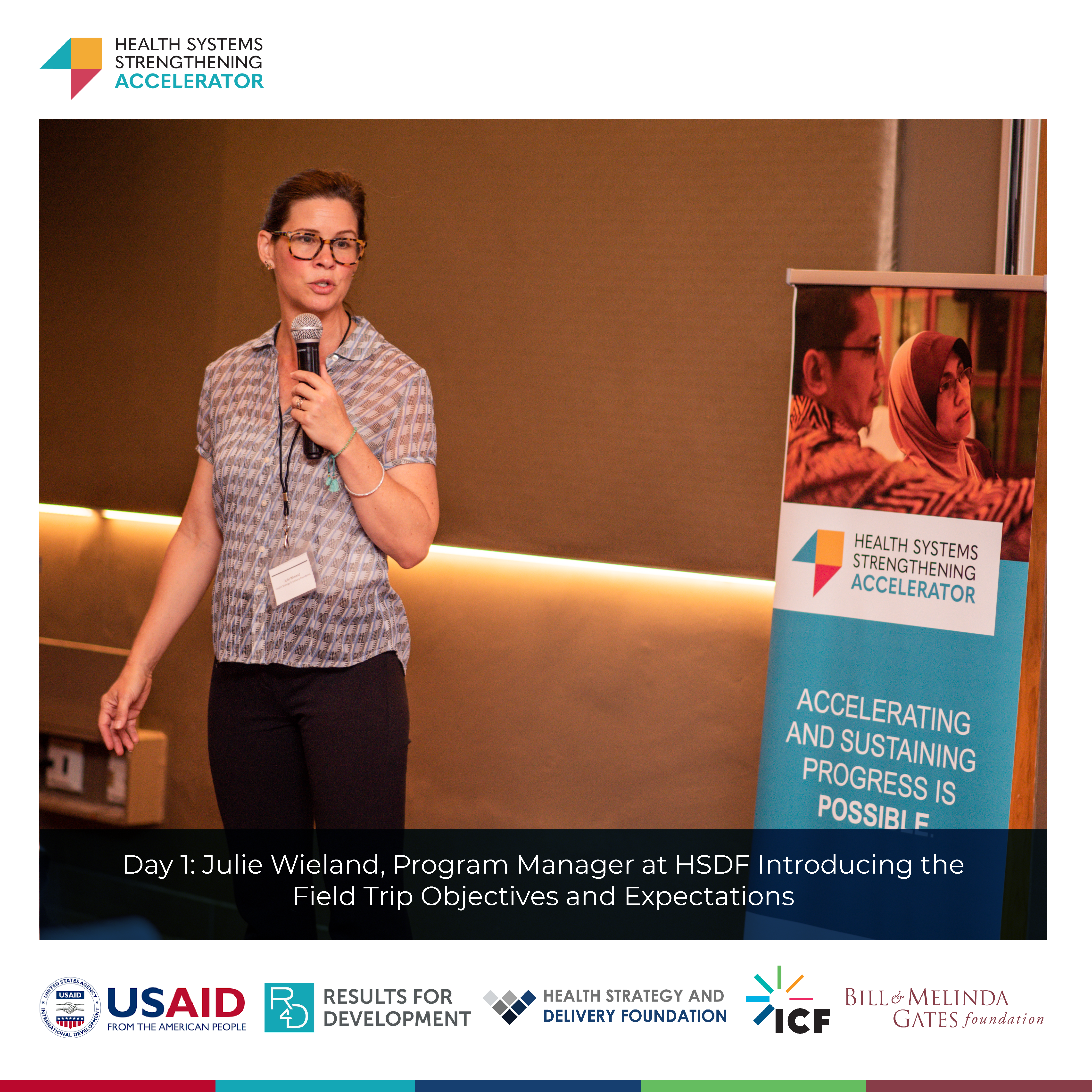Driving Accountability and Action using the National Scorecard
The scorecard was designed for the SOML program to rapidly increase access to basic service delivery across six pillars (maternal and child health (MNCH), elimination of mother-to-child transmission of HIV (eMTCT), Routine Immunization (RI), Nutrition, Malaria, Essential Medicines) through a coalition of public and private sector partners. The vision was for it to provide transparency on performance and ensure accountability.
It is a dynamic tool that currently forms an integral part of a performance management framework to:
- facilitate strategic planning of allocations and resources,
- promote immediate action to improve health outcomes and strengthen data infrastructure,
- identify weak spots for targeted action,
- galvanize focus towards healthcare initiatives in maternal newborn and child health whilst holding the government accountable to its 2012 promise of saving lives.
There are three scorecards as follows:
- A National Scorecard which displays in one place, performance across the pillars of the SOML program in all thirty-six states and the Federal Capital Territory,
- Scorecards for each of the 36+1 states displaying the same indicators, and
- A presidential scorecard that displays key priority indicators strictly for the view of the president.

National and State scorecards are reviewed quarterly during National and State level Steering committee meetings respectively. These quarterly steering committee meetings are usually chaired by senior leadership, the Honorable Minister and Commissioner of Health at the National and state level respectively.
The regular review of the scorecard especially at the state level in key focus states has been linked to observed improvements in performance within some pillars of the SOML program.

Multiple data sources are currently used to populate the scorecard due to a somewhat fragile but improving National Health Management Information system (NHMIS). While most states have made concerted efforts to improve reporting on the National platform as mandated, the quality of available data remains below par. Some of the data sources being used include the Nigerian Demographic Health Survey (NDHS), the National AIDs & Reproductive Health Survey (NARHS), the SMART Survey, administrative data from NPHCDA and WHO, and facility data from District Health Information System (DHIS2.0).
The scorecard has in recent months been disseminated more widely across states and to program partners wishing to track performance. The scorecard’s use in performance management and related improvements in health outcomes and intervention areas is translated to a number of lives saved using the LiST tool.
In the immediate to medium term, the scorecard will continue to be used to guide the focus of steering committee meetings. It will support other programs where applicable as a tracking tool and also be published quarterly to create more awareness and transparency.
Recent News
-
Empowering Nations: Safeguarding Blood, Inspiring Change
30 April 2024
Grants and Business Development Specialist
We are seeking a highly motivated and experienced Grants and Business Development Specialist to join our organization. The successful candidate will be responsible for identifying funding opportunities, developing grant proposals, and fostering partnerships with potential donors and stakeholders (regional and global). This role plays a vital part in securing funds and resources to support our organization’s mission and projects.
Apply NowPublic Health Consultant, Guinea
The consultant (working with the Accelerator team) will collect results from the tool, organize a meeting with stakeholders to discuss results from the tool, and produce a report on key findings and recommendations from the tool to be shared publicly.
Apply NowPublic Health Associate, Senegal
We are currently in search of an experienced Public Health professional in Senegal to work on the anticipated Nutrition Capacity Development and Financing Platform and provide technical assistance to elevate nutrition financing and strengthen local capacity to support these efforts. The Associate must be bilingual (English and French).
Apply Now


